You are using an out of date browser. It may not display this or other websites correctly.
You should upgrade or use an alternative browser.
You should upgrade or use an alternative browser.
D7000 Strange red colour on left side of images. Help
- Thread starter MartinCornwall
- Start date
Bob Blaylock
Senior Member
Okay after some further tests the red fringe starts to show on the D7000 at ISO1250 and on the D3200 at ISO6400. Only with the 18-200mm lens below about 40mm. Then after reading Wayne's post I tried it with the lens on Manual focus as well as the body to no effect. Then I saw Wayne's updated post about the VR causing this effect and BINGOThe VR was the cause of this problem. After nearly 3 years with the D7000 and about a 75k shutter count I was amazed that I hadn't seen this effect before. But on the night of the double Iridium flare I set up 2 cameras, one being my new D3200 so in the haste of setting up 2 cameras in a dark environment I missed turning of the VR on the 18-200mm. Problem solved. Many thanks for the input from everybody and especially to Wayne for the cure. I can have faith out in the dark again.
PS Marcel you were spot on on post#11 but I had wrongly assumed that VR was off with the confusion of setting up 2 cameras. THANKS MARCEL JAKE WAYNE...
The VR mechanism in that lens must produce some heat, which ends up, in turn, producing some infrared light, which, when other light is low enough, ends up showing up as red on the sensor—an artifact of the lens and camera being used outside the parameters for which they were designed.
I suppose anything can happen when you've got equipment operating right on the edge of its design parameters.
Having followed this thread for a while, I decided to try an experiment with my D3200 and the 18-55mm kit lens that came therewith.
I dug up the viewfinder cover that came with my camera, and installed it. With that in place, and the lens cap on, I took two 30-second exposures in a dark room, one with VR on and one with VR off, with the ISO set to “Hi-1” (which is supposed to be equivalent to 12800).
Here are the unadjusted shots, with and without VR, respectively…


And here they are, adjusted in an identical manner, to bring out whatever detail they might be hiding…


If the system were absolutely perfect, then these should just be solid black, even with the adjustment. There shouldn't have been nearly enough actual light reaching the sensor to register on it at all.
Of course, nothing is that perfect. Some of this is surely sensor noise, which I expected to be at its maximum due to my having intentionally set it to the greatest sensitivity. I bet a lot of it is also infrared, produced by any heat in or near the camera.
In this case, VR doesn't seem to have made very much difference. Now that I see them side-by-side, I am thinking that the with-VR looks like it might be just a tiny bit brighter than the without-VR; but if there is such a difference, it's evenly distributed across the whole image, and not in the form of isolated streaks or spots. Perhaps that's only an issue with some VR lenses, such as the 18-200mm that was at issue in this discussion.
I bet infrared (as a side effect of heat) has a lot to do with this effect. I do know that most digital cameras are sensitive to infrared.
Here's a simple experiment to try. With any digital camera (set it to “live view” mode, if applicable), in a fairly low-light area, have someone point any infrared-based remote control unit at the camera's lens, and watch on the screen as buttons are pushed on that remote. Though your eyes cannot see it directly, the camera will show the infrared source on the remote flashing brightly. The camera can see the infrared light that your eyes cannot.
I note that the reddish/purplish color that dominates the “enhanced” versions of my pictures above is very close to the same color with which my camera sees the infrared from my cheap knockoff of a Nikon ML-L3 remote. I suppose there's a whole line of wondering about how a color of light that is invisible to the human eye gets mapped to a human-visible color by a camera that sees it.
It only stands to reason that where visible light reaching the sensor is at a lower level than infrared produced internally by heat, that the infrared with end up having a prominent effect.
